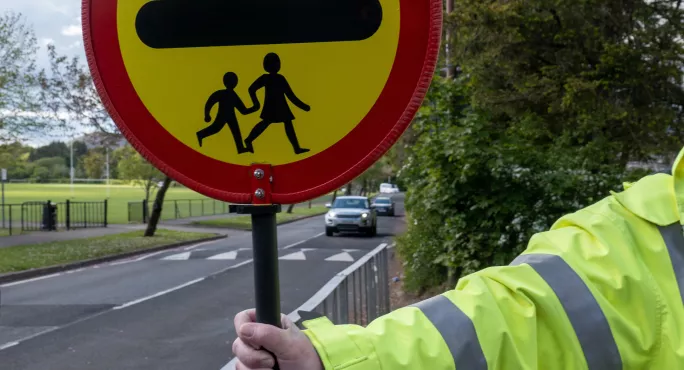4 ways to make staggered school start times work

Nothing feels more stressful than pick-up and drop-off times right now. These are the points in the day where you have the highest number of people on the school site, and the highest chance of things going wrong.
In the guidance given to school leaders on reopening, staggered starts were once again suggested to ease social distancing. But, as was the case in September, this suggestion came without any detail on how schools might run that effectively. In theory, it’s a great idea: you have the same number of parents spread out over a larger window of time to minimise contact.
However, the reality is quite different. You will have parents who arrive early and then wait to send their child in. And then the families of siblings who have different drop-off times waiting for up to 45 minutes for each child to be allowed in.
Add into the mix the reduction in before- and after-school childcare options, and you have a recipe for disaster.
How can schools make staggered starts work?
How can schools make a success of staggered starts?
1. Provide a longer window for parents to drop off and pick up
Most primaries usually operate with a window of time for parents to drop off their children in the morning. Rather than giving people a fixed time, some schools are opting to have a longer window for drop-off, allowing pupils to either play in zones in the playground before going in or go straight into the classroom with a longer lead in to the start of the first session.
On the plus side, parents will be able to drop siblings together and then head off straight away, minimising the gathering of adults outside the gates.
A drawback will be supervising that longer lead-in without taking away from learning time. But with some clever staffing, you can overcome this by using teaching assistants (TAs) or other support staff who are available.
Read more
- School reopening: Should teachers and pupils wear face masks?
- Coronavirus: The science of school closures
- Back to school: Can we close the attainment gap?
2. Staggered starts by surname
Any staggered start system that doesn’t allow siblings to be dropped together will inevitably result in parents congregating outside while they wait for their next slot. This undermines the whole point of the exercise. When weather is mild, this will be an inconvenience. But in the rain and cold, you’re likely to be faced with less compliant parents.
Staggering your starts by surname removes this extra congestion, as then parents can simply drop and go rather than having to wait for different slots. Again, you may have a more disjointed start to your morning as pupils arrive at different times, but you can overcome this by either staffing with TAs or taking time back elsewhere in the day.
3. Keep separate starts for classes, but drop siblings together
Depending on the number of siblings in your school, a better option might be to keep general drop-off slots for class or year groups, while allowing brothers and sisters to be an exception to this rule and be dropped together. This might mean a small number of pupils will need to be supervised in the classroom before the official start of lessons.
Logistically, having one family dropping multiple children to the school over a spread-out period of time only increases the chance of the spread of infection. The point of social distancing is to reduce these contact points, so allocating families with sibling pupils a single drop-off time will minimise the contact time at collection or drop-off.
4. Swap staggered starts for separate entrances
If your school site allows it, separate entrances will give you the chance to avoid staggered starts altogether. Separate entrances make social distancing for the children much easier, and parents can keep their distance as there is no need to hang around waiting for various slots.
It does become difficult if you have parents dropping to the gate and then having to bring younger siblings along as they make their way to different entrances, but this is something you can see if you can ease by using one-way systems.
Whichever approach you choose to take, there will be many different contextual points to consider: neighbouring schools, the needs of your intake, and the road systems around your school. Whatever decision you make, be prepared to work with your families to ensure your parents are as safe as your students.
You need a Tes subscription to read this article
Subscribe now to read this article and get other subscriber-only content:
- Unlimited access to all Tes magazine content
- Exclusive subscriber-only stories
- Award-winning email newsletters
Already a subscriber? Log in
You need a subscription to read this article
Subscribe now to read this article and get other subscriber-only content, including:
- Unlimited access to all Tes magazine content
- Exclusive subscriber-only stories
- Award-winning email newsletters
